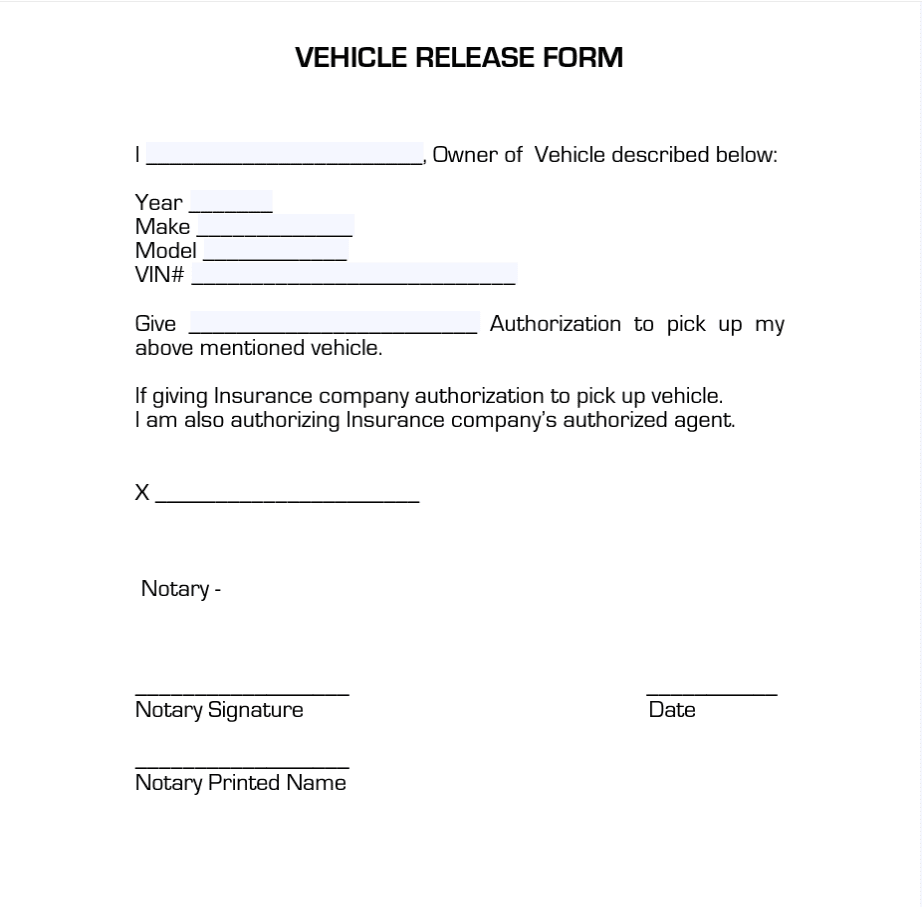Understanding Notarizing Vehicle Release Forms
In the course of your notarial duties, you may encounter requests to notarize vehicle release forms. While this task may seem straightforward, it's essential to understand the nuances involved to ensure compliance and proper execution of your duties.
When is a Vehicle Release Form Necessary?
Vehicle release forms come into play when the owner of a towed vehicle grants permission to another individual to retrieve the vehicle from the tow yard. This scenario typically arises when the owner is unavailable or unable to personally recover their vehicle. However, notarizing such forms requires careful attention to detail.
Understanding Notarization Requirements
First and foremost, it's crucial to recognize that the standard form provided by the tow yard for releasing the vehicle is not inherently valid for notarization. As a notary, it's your responsibility to inform the individual presenting the form that additional steps are necessary to make it suitable for notarization.

Explaining Notarial Certificates
To proceed with notarization, the individual must select a notarization type. This decision hinges on whether the form requires an acknowledgment or a jurat. Here's a brief explanation of each:
Acknowledgment: This type of notarization confirms that the individual signing the document has done so voluntarily and that their identity has been verified. However, the signer does not need to sign the document in the presence of the notary. Acknowledgments are typically used for deeds, contracts, and other legal documents.
Jurat: Unlike an acknowledgment, a jurat requires the signer to swear or affirm the truthfulness of the contents of the document in the presence of the notary. The notary must administer an oath or affirmation before the signer signs the document. Jurats are commonly used for affidavits, sworn statements, and other documents requiring a sworn statement.
ACKNOWLEDGEMENT

JURAT

The Notarization Process
Once the individual has selected the appropriate notarization type, they must complete the document by filling in the necessary information and affixing their signature. It's important to note that only the owner of the vehicle can complete and sign the document in the presence of a notary. Furthermore, before proceeding with notarization, the owner must present a valid government-issued identification to verify their identity. This step can be completed either through physical presentation of the ID or through an online verification process, depending on state guidelines and practices.
Adhering to State Guidelines
Adhering to State Guidelines
As with any notarial act, it's imperative to adhere to the specific guidelines and practices outlined by your state. Familiarize yourself with the laws and regulations governing notarization, including any requirements related to vehicle release forms. By staying informed and following proper procedures, you can uphold the integrity of the notarial process and safeguard against potential legal issues.
In conclusion, notarizing vehicle release forms requires attention to detail and a thorough understanding of notarial principles. By guiding individuals through the process, explaining notarial certificates, and adhering to state guidelines, notaries can ensure that these documents are properly executed and legally binding.

